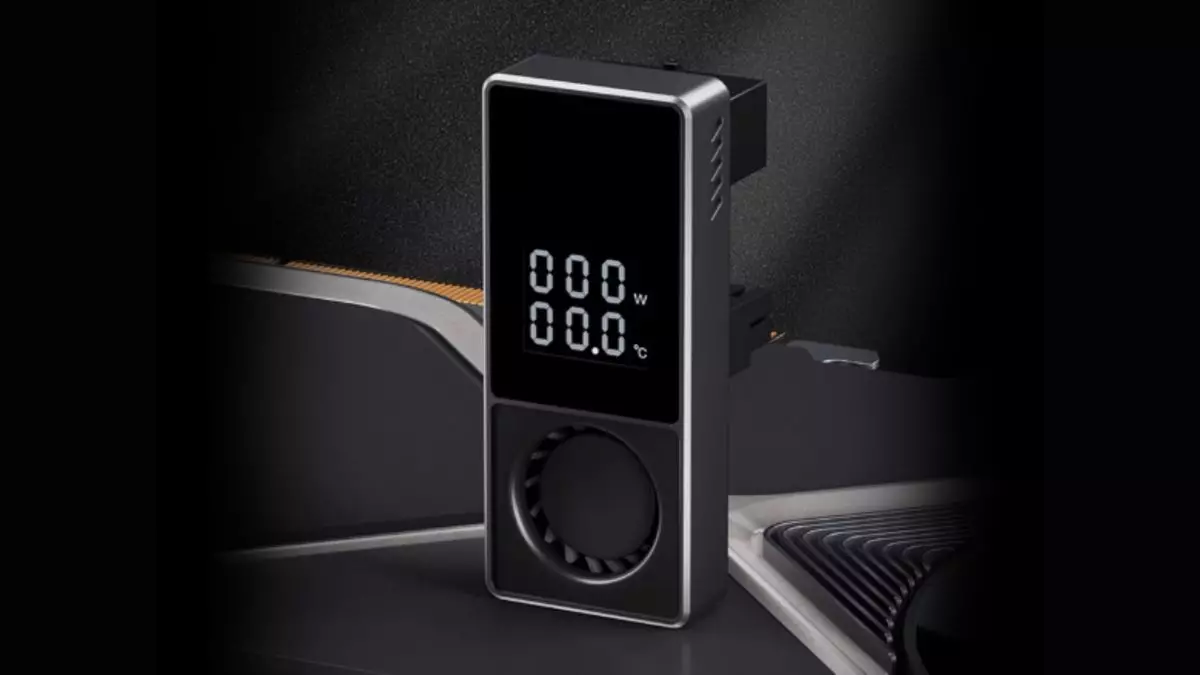As we plunge deeper into the digital age, the gaming industry finds itself at a crossroads of innovation and consumer demand. While the newly released RTX 50 series graphics cards promise enhanced performance, many gamers are still gravitating towards the more established 40 series models. This trend isn’t merely due to preference but the overwhelming supply issues surrounding the latest offerings. Consequently, gamers are seeking reliable, powerful solutions that can meet their gaming needs without the hurdles of availability.
The introduction of high-performance graphics cards has ushered in new expectations regarding power consumption and thermal management. High-end GPUs, such as the RTX 4090, are notorious for their hefty power requirements, sometimes leading to frustration and even hardware malfunctions. In response to these challenges, innovative products are emerging. One notable development is a 16-pin graphics card adapter equipped with integrated fans, temperature gauges, and power consumption displays. Priced at approximately $30, this adapter aims to maintain optimal operational conditions for GPUs, easing the anxieties of gamers concerned about overheating cables and imminent hardware failure.
Functionality and Design of the Adapter
This unique adapter from K.A, which debuted on the Chinese shopping site TaoBao, is designed to work specifically with RTX 40 series graphics cards. It holds a distinct 180-degree angle that positions it conveniently to the side of the graphics card, displaying real-time information on temperature and power consumption via a mini-monitor. Furthermore, the adapter’s fans actively cool the cables, extending the lifespan of both the cable and the GPU in the long run. This is especially crucial for those who use high-end rigs and require assurance that their systems can handle the increased thermal load without compromising performance.
However, the practicality of this adapter isn’t without its limitations. For users to take full advantage of its monitoring capabilities, a transparent side panel is required, showcasing the gadget as a visual centerpiece in the rig. While many gamers find aesthetic appeal in displaying their builds, this necessity may restrict the intended consumer base. It raises questions about whether the market will embrace a product that is as much about looks as it is about function.
Additionally, while the adapter addresses the issues surrounding cable overheating—an alarming concern that came to light when reports of melting connectors surfaced at the RTX 4090’s launch—its existence does point to an underlying problem in GPU power management. Manufacturers are advised to consider more integrated solutions that can mitigate these complications without relying on third-party accessories.
A critical point raised by industry experts is the inherent risk associated with using third-party adapters. Compatibility and safety become major concerns, particularly with high-performance components. Expert guidance suggests that the best practice is to invest in a suitable power supply unit (PSU) and utilize the cables provided by the manufacturer. This approach ensures reliability and reduces the chances of experiencing issues that third-party solutions may introduce.
While this adapter may not revolutionize the cable adapter market, it certainly highlights a growing need for enhanced power management in high-performance graphics cards. As gaming enthusiasts gear up for more intense experiences powered by future RTX 5090 and RTX 5080 releases, manufacturers would do well to learn from this product’s concept. The integration of advanced monitoring features directly into the cards and PSUs could offer a streamlined approach, potentially eliminating user error related to cable connections and temperature mismanagement.
In essence, the intersection of gaming’s power demands and user safety necessitates ongoing innovation. While products like the K.A adapter are steps in the right direction, the ultimate goal should revolve around holistic solutions within GPU design and power supply technology, ensuring that gamers can push the limits of their rigs without the worry of overheating and potential hardware failures.

